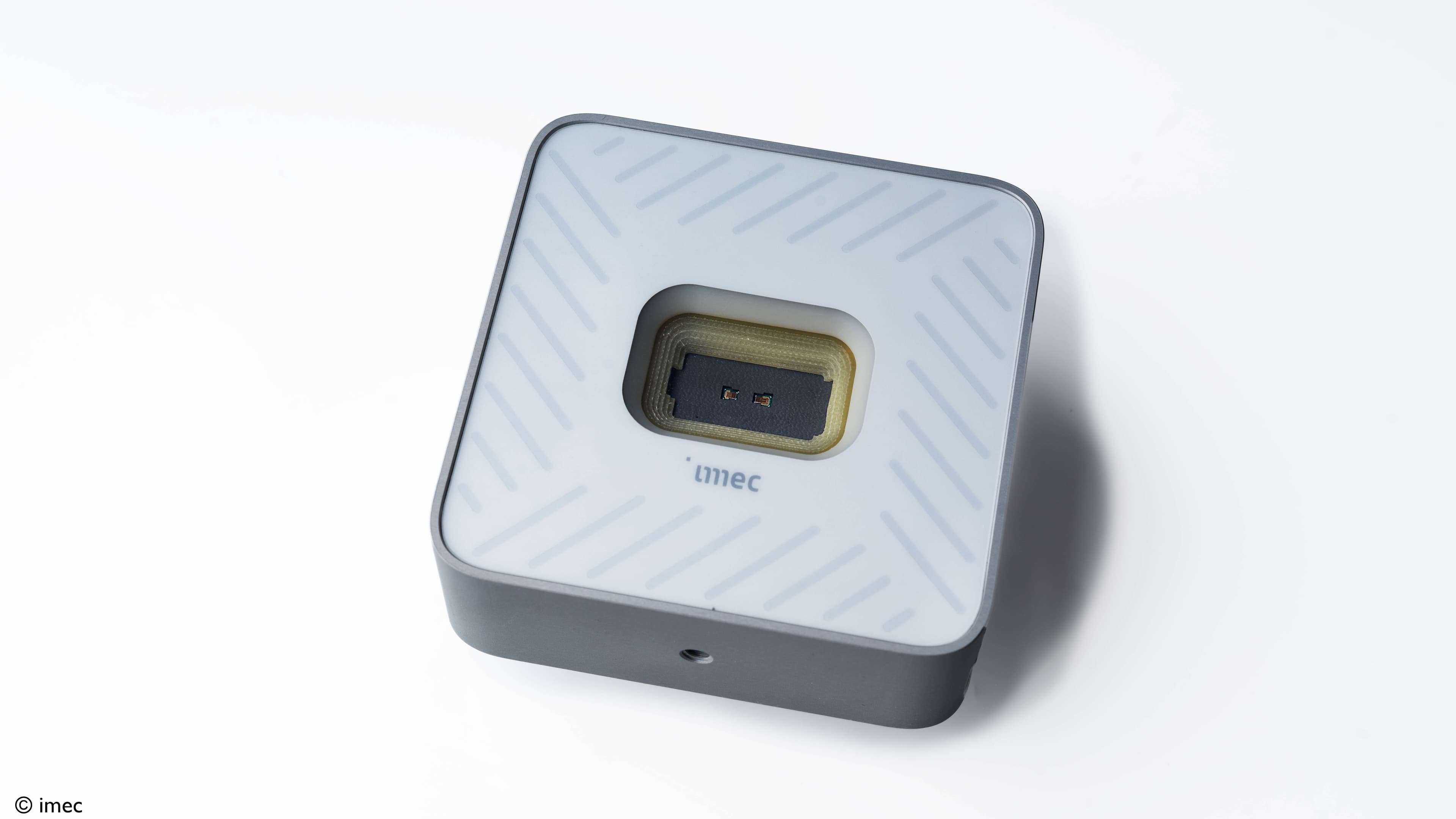
Waveguide-based color splitters for image sensors
This color-splitting technology – an alternative to traditional Bayer filters – enables high-resolution image sensors, using standard back-end-of-line processing on 300mm wafers.
An ideal color imager detects every incident photon and its color, and is only limited in spatial resolution by the diffraction limit.
Today’s color image sensors with ever smaller pixel sizes are approaching the diffraction limit. They use color detection filters arranged in a Bayer matrix, which absorbs 70% of the incoming light.
This prevents the detection of a large fraction of photons. They're absorbed before they reach the sensor.
New concept to replace Bayer filters
Imec uses vertical waveguides on top of an image sensor, to split the incoming light of a scene into its constituting colors. These photons are then directed to the individual pixels.
Thus, the light is not ‘filtered’ but ‘split’ into colors. Every photon of the scene is detected by the image sensor pixels, which results in a superior signal-to-noise ratio. The higher refractive index of the waveguides shrinks the photons compared to their size in air. This makes it possible to further scale the pixels below the diffraction limit.
Some details on the new technology:
- Si3N4 vertical waveguides in SiO2 on glass
- Replaces color filter and microlens arrays
- Compatible with high numerical aperture camera lenses
- Tunable color splitting via geometry
- Standard back-end-of-line process on 300mm wafers
- Sub-micron pixel sizes
Imec presented this technology at the 2023 International Electron Devices Meeting (IEEE IEDM 2023).

3D visualization and transmission electron microscope cross section of the vertical waveguide array for color splitting for high-resolution image sensors.
This new technology is interesting for numerous markets, including smartphones, automotive and medical (endoscopy). It shows exceptional color accuracy (Vora value > 95%) thus enabling true innovations in these markets.
Want to know more? Click the button below to get in touch.












